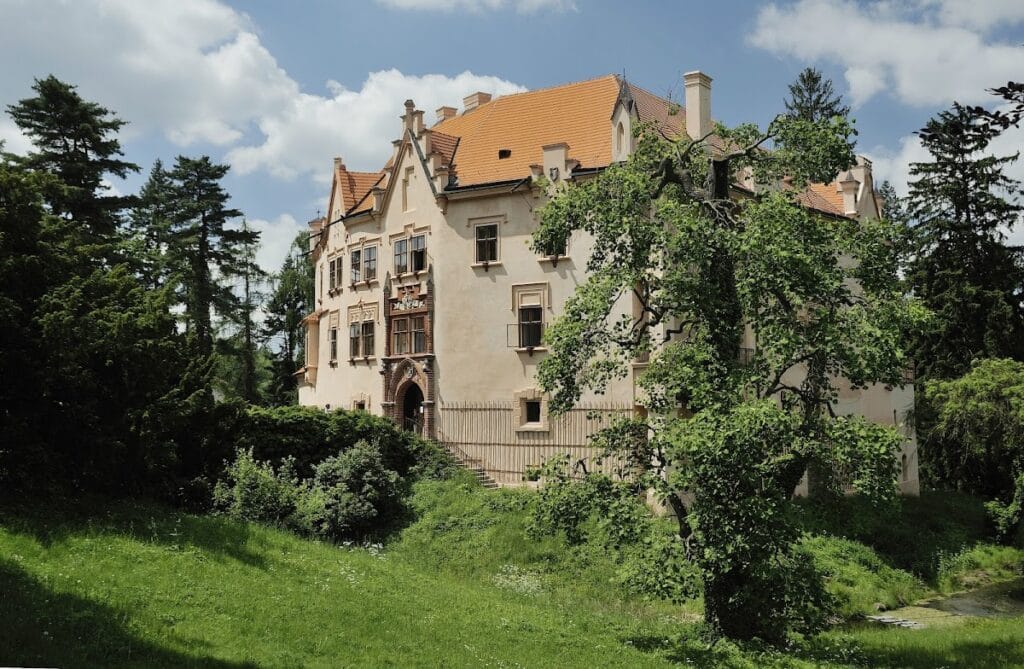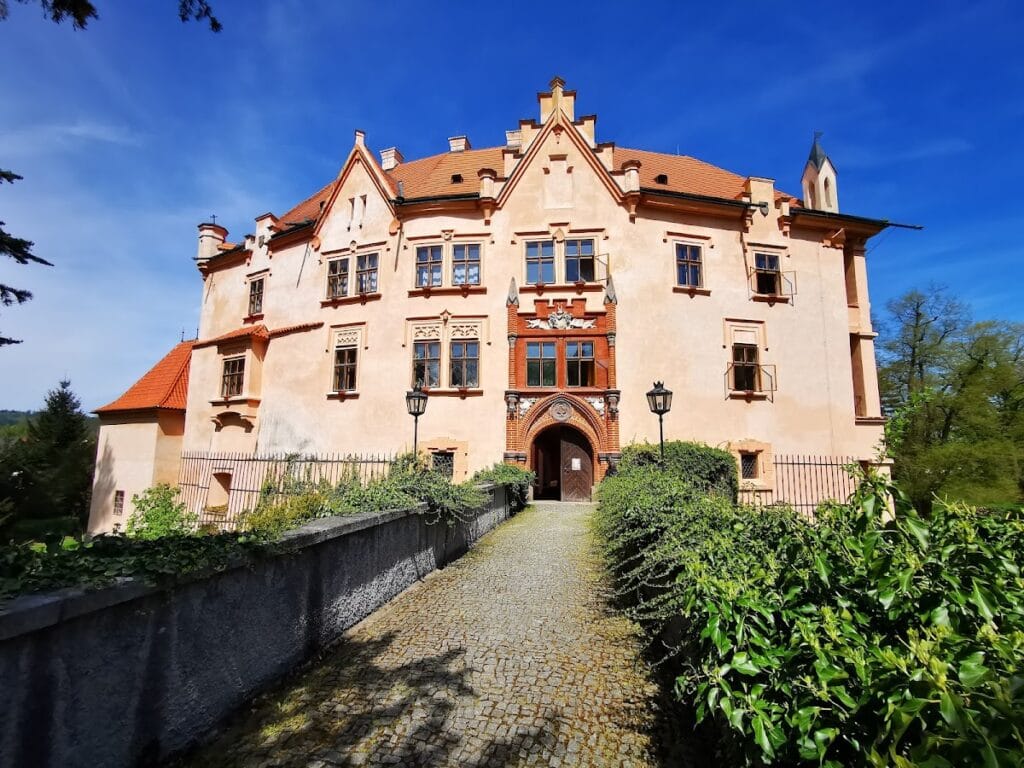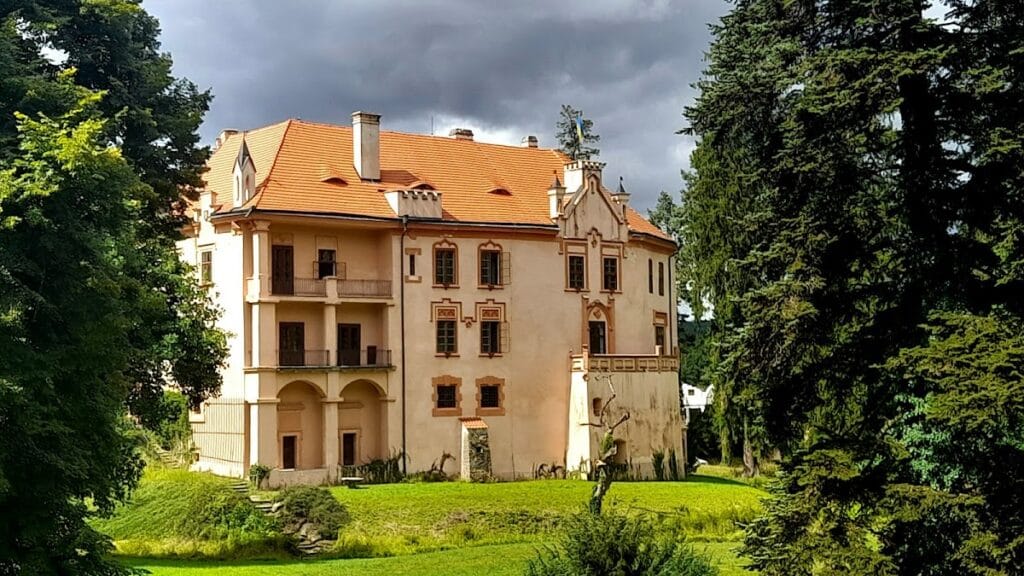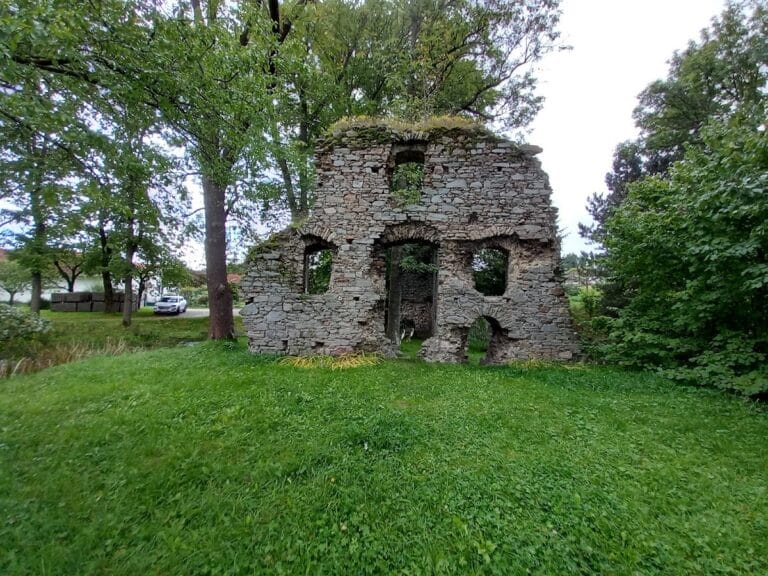Vrchotovy Janovice Castle: A Historical Landmark in the Czech Republic
Visitor Information
Google Rating: 4.6
Popularity: Low
Google Maps: View on Google Maps
Official Website: www.nm.cz
Country: Czechia
Civilization: Medieval European
Remains: Military
History
Vrchotovy Janovice Castle is located in the municipality of Vrchotovy Janovice in the present-day Czech Republic. Its origins trace back to the medieval period, shaped by a succession of noble families and reflecting the changing architectural and social landscape of the region.
The earliest structure on the site was a Gothic fortress constructed around 1350 by the Lords of Janovice. This original stronghold functioned as a water fortress, surrounded by moats and designed to provide defense and control over the territory. In 1453, ownership passed to Štěpán Vrchota of Vrchotice, whose family name the castle later adopted. During the 16th century, the fortress underwent expansions incorporating Renaissance elements, enhancing its residential quality while maintaining defensive features.
From the 17th century into the 18th century, the castle came under the stewardship of the Vrtba family. They transformed the fortress into an elegant and comfortable residence, reflecting the tastes of the Baroque and Rococo periods. Alongside architectural improvements, a large park was established surrounding the castle grounds, marking a shift from purely military use to a noble estate focused on leisure and representation.
In the early 19th century, specifically in 1807, Adam of Vrtba sold the property to Count František Josef Vratislav of Mitrovic. The Vratislav family initiated a comprehensive reconstruction around 1856 that gave the castle its characteristic neo-Gothic appearance visible today. This transformation included decorative heraldry and architectural details that recalled the medieval Gothic style but were interpreted through 19th-century Romantic sensibilities.
In the early decades of the 20th century, Baroness Sidonie Nádherná became the castle’s final private owner. She was noted for her role as a cultural patron and organizer, inviting significant figures from the Czech and broader European intellectual and artistic world. Among her guests were writer Karel Čapek, politician Alice Masaryková, critic Karl Kraus, and poet Rainer Maria Rilke, who contributed to the castle’s reputation as a salon of artistic and political exchange.
During World War II, the castle was taken over by the Nazi SS and repurposed for military headquarters and barracks. Following the war, Soviet troops along with Czechoslovak forces occupied the site. In 1949, the castle was nationalized by the state. It was subsequently used primarily for industrial and archival purposes, including serving as a warehouse for textiles and storage for various archives, which led to a period of neglect.
The National Museum assumed ownership in 1957, embarking on a restoration project to recover the castle’s historic character. It was converted into a public museum highlighting 19th-century Czech society, as well as dedicated exhibitions on the lives and works of Rainer Maria Rilke, Karl Kraus, and the tradition of Czech bell founding. This transition secured the castle’s preservation and ensured its historical and cultural legacy endured.
Remains
The castle’s layout is an irregular triangular shape composed of three interconnected wings arranged around a closed courtyard. Access to this courtyard is provided by two vaulted stone bridges that span the remains of an original water moat, recalling the castle’s early defensive function as a water fortress. These bridges highlight the integration of defensive and residential architecture over centuries of development.
The eastern wing represents the oldest part of the building, believed to date back to the 15th century. It features the original tower situated at its southern end, a vestige of the medieval fortress that once dominated the site. This wing anchors the historic core and retains structural elements characteristic of the Gothic period.
The southern wing, constructed during the 16th century, contains the main entrance to the castle. It exemplifies the Renaissance phase of expansion, blending fortified aspects with more refined residential features. Together with the eastern wing, it frames the main access route into the inner courtyard.
Beyond the central castle complex, former agricultural and administrative buildings lie to the south, reflecting the estate’s broader functional role in managing land and resources. These structures support the understanding of the castle not only as a noble residence but as a center of regional organization and economy.
Surrounding the main buildings is an English-style landscaped park featuring an artificial lake at its center. This carefully arranged park dates largely from the 17th and 18th centuries, corresponding to the period when the Vrtba family transformed the site into a luxurious domicile. Within the park are ancillary structures including the gardener’s house, while fragments of a greenhouse and a terrace survive as traces of past horticultural pursuits.
The park also contains a family cemetery with gravestones marking the resting places of members of the Nádherný family, alongside memorials for their pets. This intimate detail illustrates the personal dimension of the castle’s later owners.
Architecturally, the castle displays a blend of styles layered over time. Gothic origins are visible in the oldest masonry and tower. The Renaissance influence appears in expansions carried out in the late 16th century, while Baroque and Rococo interventions during the 18th century added decorative flourishes and spatial enhancements. The mid-19th century neo-Gothic renovation imposed a revived medieval character, most notably through heraldic decorations such as the Vratislav of Mitrovic coat of arms dated 1856, which adorns the main portal, and family crests positioned above the castle gate.
Inside the castle, exhibitions provide further insights, including portraits and personal items connected to prominent 19th-century Czech cultural figures. Among these is a striking 1906 portrait of Baroness Sidonie Nádherná by Max Švabinský, rendered in an expressive style influenced by the Norwegian artist Edvard Munch. These displays enrich the visitor’s understanding of the castle’s cultural history alongside its architectural development.










